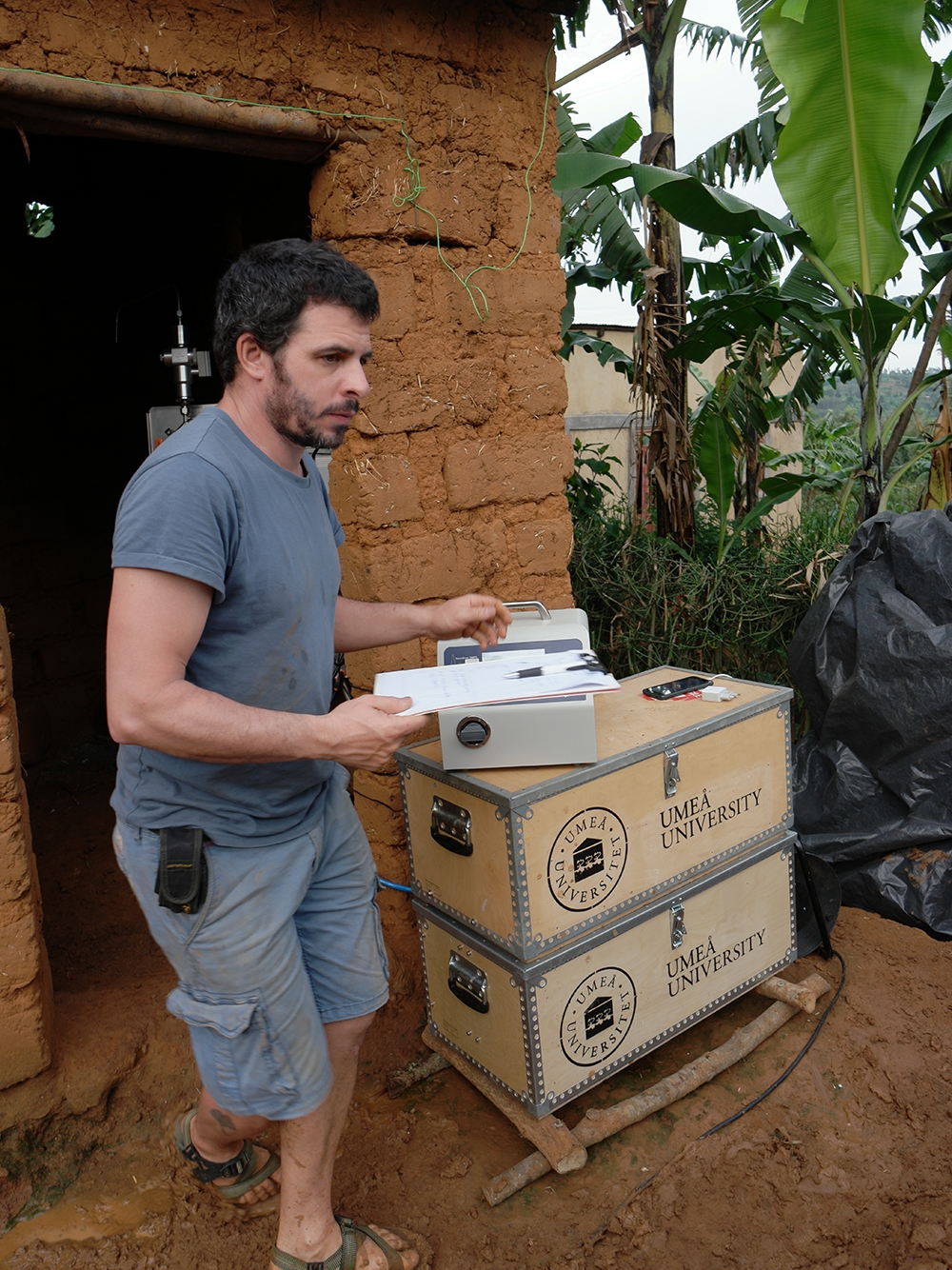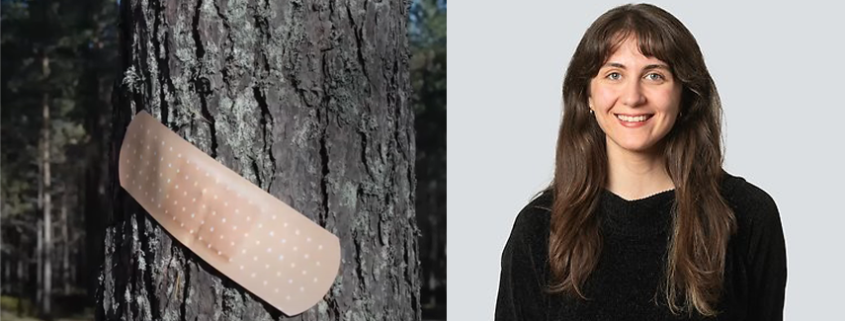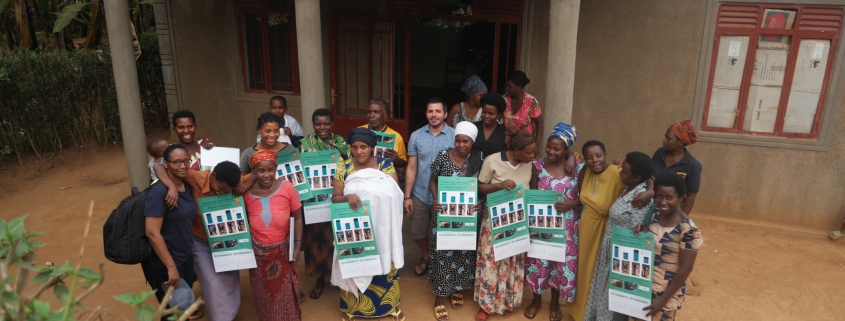For centuries, we’ve known how to make paper from wood.
Who would have imagined that one day it could help heal wounds?
Science keeps pushing boundaries and makes the impossible possible.
Cellulose, in particular, is nature’s quiet masterpiece: a strong, fibrous network that gives trees their strength and shape. These structures work together, forming the tall forests that breathe life into our planet. Now imagine being able to gently rearrange that internal structure of wood and guide it into new forms. With a careful touch of chemistry, this transformation becomes possible. One of the most effective ways to achieve this is through a process called TEMPO oxidation, which allows scientists to open up the cellulose fibers and reveal the hidden layers within wood. Its structure separates into nanocellulose, threads thousands of times thinner than a human hair, yet remarkably strong. From these, new materials can be formed: light, transparent, and flexible sheets, known as nanocellulose films, that still carry the essence of their natural origin.
But to reach this stage, wood must first go through a long journey: stripped, pulped, bleached, and refined before it can be transformed into nanocellulose. PhD student Yagmur Bas asked a simple but daring question: What if we could skip all that?
“I wanted to see how far we could go using the wood in its natural, unprocessed form,” Yagmur explains. “Could it still develop into a nanocellulose network, without all the usual processing?”
To find out, she began working with wood particles from different species, exposing them to the same TEMPO-oxidation process normally used for refined pulp. She compared these raw particles with never-dried and commercial TEMPO-oxidized pulps, watching how each material changed as the fibers unfolded and reformed into delicate networks. Some woods opened more readily and carried more charge; others formed denser, tougher structures. These side-by-side experiments offered a rare glimpse into how both the origin of the tree and the way the material had been processed shaped the chemistry and the nature of the final film.

The result was a material with a character of its own. The nanocellulose networks formed from TEMPO-oxidized wood turned out to be remarkably stable and adaptable. They absorb in large amounts of liquid while staying intact, their fine structure holding together even when fully swollen. This balance between softness and strength made them ideal for for contact with living tissue: gentle to skin, yet mechanically reliable.
Working closely with her supervisor, Linn Berglund, Yagmur began shaping these films into materials that could serve real functions, particularly for wound healing. Together with biochemical collaborators, they looked for ways to integrate bioactive compounds, such as “healing peptides”, into the cellulose network, allowing the film not just to protect but to actively support recovery.
The transparency of the films added another dimension. Light could pass through the thin, wood-derived film, revealing what lay beneath, a property that would soon capture attention far beyond the laboratory.

Foto: Per Bäckström
“As soon as they saw it, the nurses focused on the transparency,” recalls Linn Berglund. “Being able to check a wound without taking off the dressing is a clear clinical advantage.”
Beyond the biomedical field, the films also showed potential for electrochemical applications, demonstrating stability and ion transport properties relevant for energy storage systems.
What began as a materials study had quietly grown into something more, a collaboration that shaped both the material and the people behind it. For Yagmur Bas, it became a foundation to build on, and the next step of that journey will unfold at her upcoming public defense.
Yagmur Bas will publicly defend her doctoral thesis, From Wood to Advanced Materials: Multifunctional TEMPO-Oxidized Wood Nanofibril Networks as Wound Dressings and Energy Storage Device Separators at Luleå University of Technology, on 20 November 2025 at 10:00.
Doctoral research explores new links between energy, health and sustainability in rural Africa.
Access to clean and reliable energy remains a major challenge in rural sub-Saharan Africa. Millions of families still use traditional and inefficient cookstoves, which pollute homes with smoke, cause respiratory illness, place heavy burdens on women who collect firewood, and contribute to environmental degradation. In his doctoral thesis at Umeå University, Natxo García-López examines how more sustainable bioenergy solutions can address these challenges.
His work combines laboratory studies, field experiments in Rwanda, systematic reviews, and a perspective study that explores new bioenergy approaches. The findings highlight the value of improved cookstoves, which burn more efficiently and reduce both emissions and health risks. Still, García-López’s research extends beyond stoves to integrated energy solutions. In his thesis, he broadens the perspective to the community level, examining how bioenergy can be scaled and integrated into broader frameworks of rural development and energy access. By integrating agroforestry with bioenergy, he outlines a system in which farmland serves more than its traditional role of producing food. Sustainably managed trees and crops can supply households with cleaner cooking fuel while also generating surplus biomass for electricity production through gasification. In this way, everyday cooking becomes directly connected to rural development, energy security and improved access to modern energy services.
“It’s a blueprint for scalable, community-level energy solutions,” he says.

Fieldwork in Rwanda – challenging but rewarding

Conducting research in rural Rwanda was demanding, both logistically and scientifically. It involved traveling to remote areas, working with limited resources, and operating advanced instruments under difficult conditions. At the same time, it created opportunities to work closely with local communities and to collect data directly from rural households, offering valuable insights into their everyday challenges.
“Collecting data in these settings requires effort, infrastructure and experience. But it was also incredibly rewarding. It gave me a first-hand understanding of the challenges rural households face – and of how cleaner technologies can truly make a difference,” says García-López.
Beyond technology – a matter of people’s lives
Although the thesis devotes considerable attention to the technical analysis of combustion processes, emissions and particles, its implications reach far beyond engineering. It sheds light on the everyday realities of people in rural sub-Saharan Africa, particularly the lack of access to modern energy services such as clean cooking, electricity, and indoor air pollution. The findings also resonate with several pressing global challenges – from public health and gender equality to climate change and environmental sustainability.
“My findings are not only about energy systems. They also have implications for public health, gender equity and environmental sustainability. Cleaner cookstoves can make indoor environments safer, reduce the risk of disease, and ease the daily workload for women. At the same time, they help preserve forests and reduce climate emissions,”says García-López.

Beyond the technical contributions, García-López hopes that his work can spark dialogue among decision-makers and practitioners. Its true impact will depend on how it is received by the research community, policymakers, Non-Governmental Organisations and other actors, but his ambition is that it will make a positive difference for people in rural sub-Saharan Africa who remain without access to modern energy services.
What’s next? Bridging disciplines for real impact
While the dissertation provides new evidence and technical insights, it also opens the door to future research directions. García-López sees his work not as an endpoint but as the beginning of a broader research journey, one that blends technological innovation with real-world application in countries with developing economies.
“Resource-intensive and complex, yes, but by building interdisciplinary projects in rural sub-Saharan Africa, we can achieve cleaner air, better health, and a more sustainable energy future,” he affirms.
Natxo García-López will publicly defend his doctoral thesis at Umeå University on 19 September 2025.
The public defence is an open event, and all are welcome to attend. Why not take the opportunity to hear more about his work, and ask your own questions?
Wang,D. Zhao,J. Claesson,P. Christakopoulos,P. Rova,U. Matsakas,L. Ytreberg,E. Granhag,L. Zhang,F. Pan,J. Shi,Y. A strong enhancement of corrosion and wear resistance of polyurethane-based coating by chemically grafting of organosolv lignin. 2024. Materials Today Chemistry. 35. 10.1016/j.mtchem.2023.101833
Adeniyi,K. O. Manavalan,G. Zainelabdin,A. Mikkola,J. -P. Tesfalidet,S. Solution-Processable Bismuthene Nanosheets for Ultrasensitive Sensing of Heavy Metal Ions via Anodic Stripping Voltammetry. 2024. ACS Applied Nano Materials. 7. 17. 20217-20228. 10.1021/acsanm.4c03008
Wang,D. Jiang,L. Kjellander,M. Weidemann,E. Trygg,J. Tysklind,M. A Novel Data Mining Framework to Investigate Causes of Boiler Failures in Waste-to-Energy Plants. 2024. Processes. 12. 7. 1346. 10.3390/pr12071346
Völtz,L. R. Berglund,L. Oksman,K. Use of Recycled Additive Materials to Promote Efficient Use of Resources While Acting as an Effective Toughness Modifier of Wood–Polymer Composites. 2024. Polymers. 16. 18. 2549. 10.3390/polym16182549
Vishwakarma,K. Buckley,S. Plett,J. M. Lundberg-Felten,J. Jämtgård,S. Plett,K. L. Pisolithus microcarpus isolates with contrasting abilities to colonise Eucalyptus grandis exhibit significant differences in metabolic signalling. 2024. Fungal Biology. 128. 7. 2157-2166. 10.1016/j.funbio.2024.09.001
Vieira,Y. Spode,J. E. Dotto,G. L. Georgin,J. Franco,D. S. P. dos Reis,G. S. Lima,E. C. Paracetamol environmental remediation and ecotoxicology: a review. 2024. Environmental Chemistry Letters. 22. 5. 2343-2373. 10.1007/s10311-024-01751-1
Valipour,M. Mafakheri,F. Gagnon,B. Prinz,R. Bergström,D. Brown,M. Wang,C. Integrating bio-hubs in biomass supply chains: Insights from a systematic literature review. 2024. Journal of Cleaner Production. 467. 142930. 10.1016/j.jclepro.2024.142930
Thoresen,P. P. Fahrni,J. Patel,A. Enman,J. Gustafsson,T. Rova,U. Christakopoulos,P. Matsakas,L. Organosolv-derived lipids from hemicellulose and cellulose, and pre-extracted tannins as additives upon hydrothermal liquefaction (HTL) of spruce bark lignins to bio-oil. 2024. BMC Biotechnology. 24. 1. 10.1186/s12896-024-00917-7
Thoresen,P. P. Delgado Vellosillo,I. Lange,H. Rova,U. Christakopoulos,P. Matsakas,L. Furan Distribution as a Severity Indicator upon Organosolv Fractionation of Hardwood Sawdust through a Novel Ternary Solvent System. 2024. ACS Sustainable Chemistry and Engineering. 12. 4. 1666-1680. 10.1021/acssuschemeng.3c07236
Tang,C. Cavka,A. Bui,M. Jönsson,L. J. Comparison of simultaneous saccharification and fermentation with LPMO-supported hybrid hydrolysis and fermentation. 2024. Frontiers in Bioengineering and Biotechnology. 12. 1419723. 10.3389/fbioe.2024.1419723
Svystun,T. Böhlenius,H. Biomass Production of the Poplar Clone OP42 During the Second Rotation Plantation–The Effects of Four Thinning Treatments. 2024. Bioenergy Research. 17. 3. 1425-1435. 10.1007/s12155-024-10730-x
Strandberg,A. Thyrel,M. Falk,J. Öhman,M. Skoglund,N. Morphology and phosphate distribution in bottom ash particles from fixed-bed co-combustion of sewage sludge and two agricultural residues. 2024. Waste Management. 177. 56-65. 10.1016/j.wasman.2024.01.040
Strandberg,A. Chevreau,H. Skoglund,N. AI-assisted deep learning segmentation and quantitative analysis of X-ray microtomography data from biomass ashes. 2024. MethodsX. 13. 10.1016/j.mex.2024.102812







